The Birth of the Peace Corps
The Birth of the Peace Corps
JFK’s first direct association with the Peace Corps idea came on February 21, 1960. He was on a college television show called “College News Conference” and someone asked about the “Point Four Youth Corps.” Kennedy said he didn’t know what the legislative proposal was. Afterwards, he told aide Richard Goodwin to research the idea. Goodwin, who was the Kennedy link with the “brain trust” at Harvard, wrote to Archibald Cox at the university’s law school about the idea.
Then in April and May of 1960, when Kennedy was running against Humphrey for the nomination, the idea was discussed further. Humphrey introduced his bill for a “Peace Corps” in the Senate in June, but after Kennedy won the nomination in July, Humphrey transferred all his research files to Kennedy’s office. The Cow Palace speech made by Kennedy right before the election, which revealed his growing commitment to the “Peace Corps” concept, owed a great deal to Humphrey’s ideas.
In early September, Kennedy asked both Congressman Reuss and a Professor Sam Hayes at the University of Michigan to prepare position papers on a national youth service program.
On September 22nd, at the University of Nebraska, Lyndon Johnson, the Vice Presidential candidate, called for a “Volunteers for Peace and Humanity” program and got a great campus response. He called Kennedy that night and told him that such a volunteer program would be a “great political asset.”
In October, during the television debates with Nixon, Kennedy discussed the Third World, the Communist threat, and the need for new foreign policy initiatives, but never mentioned a “Youth Peace Corps.”
Then came Ann Arbor, Michigan.
On October 14, Kennedy flew into Michigan from New York, where he had just completed his third debate with Nixon. He had agreed to say a few words to the students at the university. Ten thousand students waited for him until 2 am, and they chanted his name as he climbed the steps of the student union building.
Kennedy launched into an extemporaneous address. He challenged them, asking how many would be prepared to give years of their lives working in Asia, Africa and Latin America?
The audience went wild. (I know, because at the time I was a graduate student at Western Michigan University in Kalamazoo. I was also working part-time as a radio reporter for WKLZ in Kalamazoo and had gone U of Michigan to cover the event.)
According to Sargent Shriver, “No one is sure why Kennedy raised the question in the middle of the night at the university.” Possibly Kennedy thought of the Peace Corps at Michigan because someone reminded him that Professor Sam Hayes taught at the university’s International Studies Department. Samuel Hayes was an early advocate of the “Peace Corps idea,” and had been asked by Kennedy to prepare position papers on the idea of a national volunteer organization.
Harris Wofford thinks that Kennedy’s remarks were a counterattack to a criticism that Nixon 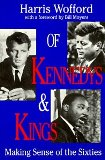 had made during the debate earlier in the evening. Nixon had called the Democrats the “war party.” In his book, Of Kennedys and Kings: Making Sense of the Sixties, Wofford writes: “Stung by Nixon’s words, Kennedy may have remembered the idea of a Peace Corps and spoken as he did in order to counteract the image of a Democratic war party.”
had made during the debate earlier in the evening. Nixon had called the Democrats the “war party.” In his book, Of Kennedys and Kings: Making Sense of the Sixties, Wofford writes: “Stung by Nixon’s words, Kennedy may have remembered the idea of a Peace Corps and spoken as he did in order to counteract the image of a Democratic war party.”
After that speech — the next day, in fact — Chester Bowles, former governor of Connecticut and an advisor to Kennedy who would later become Kennedy’s Ambassador to India, gave a long talk on the same theme. (A day later in Kalamazoo I was part of the press that interviewed Bowles, who was following after Kennedy on this tour through the Midwest. What I remember most about this event was that in responding to my question of what area of the world would be most interesting in the next decade, Bowles said Africa, where vast changes would occur because of the end of colonial rule.)
Meanwhile, back in Ann Arbor
On the Michigan campus, after hearing Bowles, two graduate students — Alan and Judy Guskin — wrote a letter to the editor of The Michigan Daily, the university newspaper, asking readers to join in working for a Peace Corps. (The editor of the Daily was Tom Hayden. The paper later won a journalism award for its coverage and support of the Peace Corps movement.) Students began to circulate a petition urging the founding of a Peace Corps.
Then a Democratic National Committeewoman and UAW official, Mildred Jeffrey, learned about the students’ response from her daughter Sharon, who was studying at the university. Jeffrey put the students in touch with the Kennedy camp. However, the students couldn’t reach anyone until they got Ted Sorensen, who liked the idea of a major speech on the subject, and promised to tell Kennedy about the Ann Arbor petitions. By then the petition was also being circulated at other Big Ten universities and at colleges throughout Michigan — I signed it, as did many other students, at Western Michigan University.
In the Republican camp, Nixon was being urged to embrace the Peace Corps idea. Two Michigan faculty members — Elise and Kenneth Boulding — who were critical of Kennedy’s cold war stances, pushed for the students to be nonpartisan. But when Nixon wouldn’t take up the plan, the Guskins turned to Kennedy in late October.
Kennedy’s people didn’t know this. They had heard Nixon was on the verge of proposing an overseas volunteer program for college graduates, and they urged Kennedy to move out front with the idea before Nixon.
On November 2, the Guskins were notified of the Cow Palace by Kennedy that evening. It was going to be a major address on the Peace Corps idea. And Kennedy wanted to meet them and other students who were involved in the the petition drive. This was six days before the election.
The Cow Palace Speech
In his speech Kennedy referred to the charges made in the novel, The Ugly American. Kennedy pointed out that 70 percent of all new Foreign Service officers had no foreign language skills whatsoever; only three of the forty-four Americans in the embassy in Belgrade spoke Yugoslavian; not a single American in New Delhi could speak Indian dialects, and only two of the nine ambassadors in the Middle East spoke Arabic. Kennedy also pointed out that there were only twenty-six African-American officers in the entire Foreign Service corps, less than 1 percent. Kennedy saw Peace Corps Volunteers as a way to change the attitude of the State Department and create a generation of ‘new’ diplomats.
Meanwhile, the Michigan students were told to drive from Michigan University to Toledo, Ohio, and meet Kennedy when he stopped on his way back to Washington and deliver their petition — this was the same petition we had all signed at other Michigan colleges and universities.
About this meeting, Wofford writes in his book: “Kennedy grinned at the long scroll of names, and sensed the students’ discomfort when he started to put the petition in his car. ‘You need them back, don’t you?’ he asked. He had guessed right; it was before the era of Xerox and they had not copied the names and addresses.”
How important was this petition? How important were those students in the creation of the Peace Corps?
In his book about the agency, Point of the Lance, Sargent Shriver concluded that the Peace Corps would probably “still be just an idea but for the affirmative response of those Michigan students and faculty. Possibly Kennedy would have tried it once more on some other occasion, but without a strong popular response he would have concluded that the idea was impractical or premature. That probably would have ended it then and there. Instead it was almost a case of spontaneous combustion.”
The Mayflower Gang
The day after the inauguration, Kennedy telephoned Shriver and asked him to form a presidential Task Force “to report how the Peace Corps should be organized and then to organize it.” When he heard from Kennedy, Shriver immediately called Harris Wofford.
At the time, Shriver was 44; Wofford was 34. They had become good friends during the campaign. Wofford, then a law professor at Notre Dame University, had worked as Kennedy’s adviser on civil rights on the campaign, and together they had worked on the talent hunt for staffing of the new administration.
Initially, the Task Force consisted solely of Shriver and Wofford, sitting in a suite they had rented at the Mayflower Hotel in Washington. Most of their time was spent making calls to friends they thought might be helpful. One name led to another: Gordon Boyce, president of the Experiment in International Living; Albert Sims of the Institute of International Education; Adam Yarmolinsky, a foundation executive; Father Theodore Hesburgh, president of the University of Notre Dame; George Carter, a campaign worker on civil rights issues and former member of the American Society for African Culture; Louis Martin, a newspaper editor; and Franklin Williams, an organizer of the campaign for black voter registration, and a student of Africa.
Shriver had scheduled the first official meeting of his Task Force for February 6. Despite the recommendations, opinions, and reports they had received, Shriver and Wofford had made relatively little headway in defining the new program in terms of specific size, costs, organization, and objectives. Kennedy had called requesting a report by the end of February, and Shriver had to concede that, as of yet, he had not even settled on an official name for the new agency. While it was less than two weeks since the President had given him the assignment, “Kennedy wanted to know what was taking us so long,” said Shriver.
Kennedy had given Shriver a report written by Max Millikan, the director of the Center for International Studies at MIT. The report stated that the development of such an agency should be slow, placing several hundred people in the first year or two. This opposed everything Shriver believed in. Shriver later wrote, “We knew the Peace Corps would have only one chance to work. As with the parachute jumper, the chute had to open the first time.” It had to be new, in both size and thrust.
The Towering Task
Unbeknownst to Shriver and Wofford, while they were busily managing the Task Force, two officials in the Far Eastern division of the international Cooperation Administration (ICA) were working on a Peace Corps plan. Warren Wiggins, who was the deputy director of Far Eastern operations in ICA, was still in his 30s but had already helped administer the Marshall Plan in Western Europe. He was totally dissatisfied with the manner in which American overseas programs were run; he called them “golden ghettos.”
With Wiggins was Bill Josephson, just 26, and a lawyer at ICA.
They started with a program which would be limited to sending young Americans overseas to teach English. But as they worked on it, their vision broadened.
The paper they prepared detailing their recommendations they called “A Towering Task,” taking the title from the phrase Kennedy had used in his State of the Union address: “The problems . . . are towering and unprecedented — and the response must be towering and unprecedented as well.”
They sent copies to Wofford, another to Richard Goodwin at the White House, and to Shriver. As Wiggins said, “we wanted to make sure Shriver would get it.”
Shriver read the paper late on Sunday, February 5th. He thought it was brilliant and immediately sent a telegram to Wiggins inviting him to attend the Task Force meeting the next morning. With that, the so-called “midnight ride of Warren Wiggins” became an early legend in the Peace Corps.
Meanwhile, Wofford had read the Wiggins/Josephson proposal and he called Shriver at 7 a.m. to talk to him about it. Shriver told Wofford Wiggins and Josephson had already been invited to the first Task Force meeting.
Wiggins and Josephson had written the proposal in the hope that it might, as Wiggins told me, “stimulate thought.” In fact, it provided a philosophy for the Peace Corps throughout the Kennedy era.
Wiggins fundamentally disagreed with most of the academic and other institutional approaches which counseled caution and a slow beginning. Instead, he advocated initiating the Peace Corps with “several thousand Americans participating in the first 12 to 18 months.”
A Proposal for the President
Shriver introduced Wiggins and Josephson at the February 6th meeting in the Mayflower attended by a handful of other Kennedy advisors. Copies of “A Towering Task” were handed out. From this point on, Wiggins and Josephson became the engine room of the Peace Corps. Shriver describes Wiggins as “the figure most responsible” for the planning and organization that brought the Peace Corps into being.
Twice more in February Kennedy telephoned Shriver to ask about progress on the Peace Corps. The final draft of the report was done with Charles Nelson sitting in one room writing basic copy, Josephson sitting in another room rewriting it, Wofford sitting in yet another room doing the final rewrite. Shriver then made the final edits.
On the morning of Friday, February 24, 1961, Shriver delivered to Kennedy what was, in effect, the Peace Corps Magna Carta. He told the President: “If you decide to go ahead, we can be in business Monday morning.”
On March 1, 1961, President Kennedy issued an executive order establishing the Peace Corps. It has taken the “Mayflower Gang” less than a month to create the Peace Corps.
The rest is history. Our history.
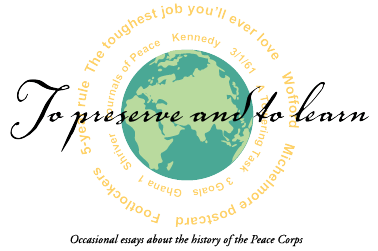

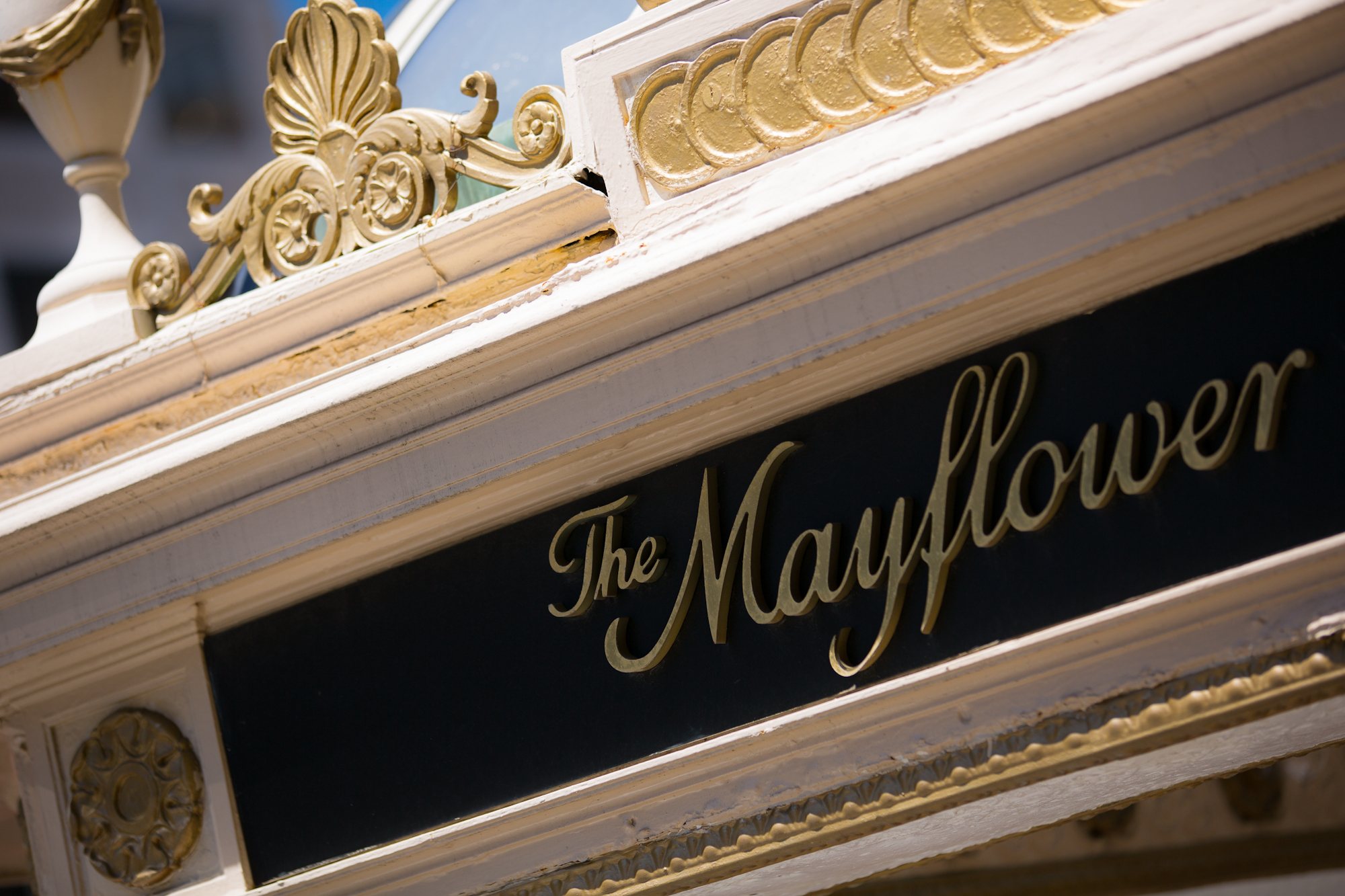
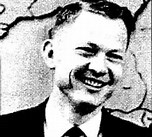
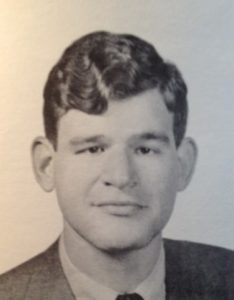
I still get a thrill every time I read “our” history.
An extraordinary movement and a story well told! I’m still thrilled by the concept, after volunteer service in Turkey and staff in Headquarters as well as CD roles in Russia, Bulgaria and Macedonia, then back to HQ to help run a Region or two and to Chair the National Peace Corps Association. A major cause in all our lives, the Peace Corps. A concept made to come alive by the service of a quarter million PCVs across the globe. And it continues!….. Good as ever!
Wow, what a valuable contribution John has made to our collective understanding of the origins of Peace Corps! I had entered PC service in January 1963, then worked on Washington PC staff through 1970–and other than the famous ‘Midnight Ride of Warren Wiggins’, had never heard or read of this formative thread that he has pulled together which subsequently gave birth to the Peace Corps, changing so many of our lives forever.
What a great story! Four from my family of Donovan’s served in the Peace corps, my older brother Bill and I in India, younger brother Tom in Samoa and my daughter, Katrina, in Bolivia. While I was serving in a small village in South India my group became acquainted with a nearby bunch of Danish Peace Corps volunteers. It would be interesting to know what other nations began similar programs, if any still exist and whether they have been as successful as the U.S. Peace Corps.
Steve Donovan, India 20B
Stephen,
I am trying to locate your brother William Donovan,who was in India I. The India I group was just recognized during a Peace Corps 60th anniversary event at Ohio State University in Columbus. Seven members of the group were here and one widow. We all had a wonderful time. The India 1 group does a very good job of keeping track of most of the India 1 members, but have no information about William.
I’d appreciate any information about him and where he lives. The OSU President, Kristina Johnson, signed a letter of appreciation for India I, because they trained at OSU in the autumn of 1961. The official letter with her signature was presented to Keith Sherper, but everyone received a beautiful copy. I have additional copies I’m sending out to either India I members who did not come or to a member of their family, if there is interest in receiving one. So I would happy to send one to William or a member of his family, if I had his contact information.
Thank you.
Ms. Wallis Harsch
Columbus, ,OH
What a stirring tale.
I always thought those who wanted to implement PC quickly and get PCVs into the field took a lesson from Teddy Roosevelt when he sent the great White Fleet half way around the world and then dared Congress not to provide the funds for the fleet to complete its worldwide trip. Any truth to the notion that the initial PC staff thought the same – get the volunteers out into the field and Congress would not leave them unfunded and hanging out there? I have read Wofford’s “Of Kennedys and Kings,” but found nothing to support that idea in Harris’ book.
Dear friend John Coyne
You told the story perfectly!
You truly have been the keeper of the Peace Corps Heart and our accurate historian.
I remember the day you brought Warren Wiggins to the office with his daughter. You shared with me the original copy of “the towering task”
I remember you working with Ted Sorensen as he submitted
an essay for our “Peace Corps stories” project. He was the very proud parent of a Peace Corps Volunteer.
I remember your long and deep friendship with Harris Wofford,
Coats Redmond, Bill Moyer, Maureen Orth, and the day Sarge burst into your classroom in Ethiopia.
You wrote amazing speeches through the years to inspire volunteers” Peace Corps Volunteers lived at the edge of the world where it burned and returned home to raise families that would serve”



 Bless you dear friend.. Patti
Bless you dear friend.. Patti
The Moyers quote “ the Stone was at the bottom
of the hill and we were alone….
But an idea survived, embodied in the Peace Corps Volunteers
….and it survives today.”
Thank you, Patti….very kind of you…but you give me too much credit…We were all one of many who gave and others today who are still giving…John
PEACE CORPS AND ITS BEGINNING EXPERIENCED REMEMBERED BY Edward Mycue (PEACE CORPS, GHANA ONE , AUGUST 1961)
I. Before Peace Corps began, as a WGBH-TV (then located on the MIT campus) & as a Lowell Fellow (Lowell Institute for Cooperative Broadcasting) intern in 1960-61, I met (as switcher/technical assistant director) candidate John Kennedy, Eleanor Roosevelt, Hubert Humphrey, Harold Stassen, Adlai Stevenson and others who discussed ideas related to what would be known as the “Peace “ on Nieman Foundation curator Louis Lyons’ 14 minute 25 second news and interview programs on WGBH-TV the then New England Television, NET, on MIT’s campus across the Charles River in Cambridge, that preceded PBS) and also worked on putting together at WGBH-TV the broadcast about the Peace Corps that aired on the networks in the Spring 1961 including our station’s footage from Washington, D.C.
II. When the test was first given at Harvard yard, I took it. I got and accepted the call to go to U.C.-Berkeley for training for the Ghana 1 contingent (the first of several that went out then); in due course, after meeting the President in the Rose Garden and in his White House Oval Office, we left for Accra from Washington, D.C. in late August 1961 in a two engine prop Convair across the Atlantic stopping for refueling in the Azores, and again in Dakar, Senegal rearing up above ocean and rain forests before coming down over the beaches of Ghana.
III. I’d come up to Boston, a graduate student from North Texas State College in Denton north or Dallas Texas to Boston University’s Graduate School of Public Relations and Communications that included a 3-day-a-week Lowell Fellow internship at NET, the New England Television’s WGBH-TV in Boston (before the days of PBS, the Public Broadcasting System) in June 1960 and among my other jobs was as the camera switcher and assistant director on the Louis Lyons twice weekly interview and news programs. During the Democratic and Republican parties’ Presidential primary season and came across talk of what came to known as the “peace corps” idea.
theLouis Lyons program, in response to Mr. Lyons’ question got the reply from JFK that he thought it a among those good plans that he endorsed, adding with that J F Kennedy smiling-almost winking-nearly chuckling-with the now famed comment that “When I am President….” he’d establish it.
IV. And he did.
©Edward Mycue 27 February 2016 San Francisco, California
mycueed@yahoo.com tel. (415) 387-2471
3595 Geary Blvd, Apt 320, San Francisco, CA 94118
Edward,
Marian Haley Beil, publisher of Peace Corps World Wide, knows well of this broadcast. She very much wanted to see if
there was an audio of it. I couldn’t find anything. I checked with Harvard and with now NPR. Would you have any suggestions? Thank you for the story about this important event.
Nieman Foundation is the only answer in connection with the Louis Lyons archives. WGBH-TV Boston may have some sources even though it moved to the Boston side of the Charles River from it’s MIT location in Cambridge where it was when I worked there. Someday something will turn up. There maybe even be something stuffed away in the JFK Library.
I did check with the Nieman Foundation and they did not have anything. Thank you for the reference of the JFK Library.
That was not checked. I will do that.
Does the Louis Lyons family have an archives apart from those of the Nieman Foundation, Harvard University, and/ or WGBH?